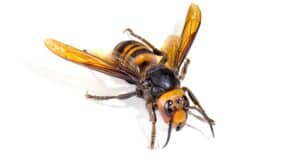Wasps are highly social insects, living in colonies with one queen and many workers. The colony may consist of several thousand individuals. Wasps are best known for their role as pollinators and their ability to paralyze prey with venom before feeding on its body fluids.
Wasps live in many habitats and eat various foods. Some species are parasitic or predatory, while others feed on nectar, pollen, or fruit juices. Many wasp species build nests from chewed wood pulp and saliva that protect their eggs and larvae from predators.
Some social wasp species tend to aggregate in large numbers during the summer when food is abundant, but they become less social during winter when conditions are less favorable. You may be wondering where wasps even go during the winter. Because they need to find warmth, this can lead to temporary swarms of thousands or even millions of individuals moving through an area over a short period.
Most wasp colonies don’t survive during winter. However, those that survive have found a comfortable place to hibernate, especially fertile females (queens). They find protection in your home or debris around the house. They can also be found hibernating in wood, trees, or underground.
How Do Wasps Survive During Winter?
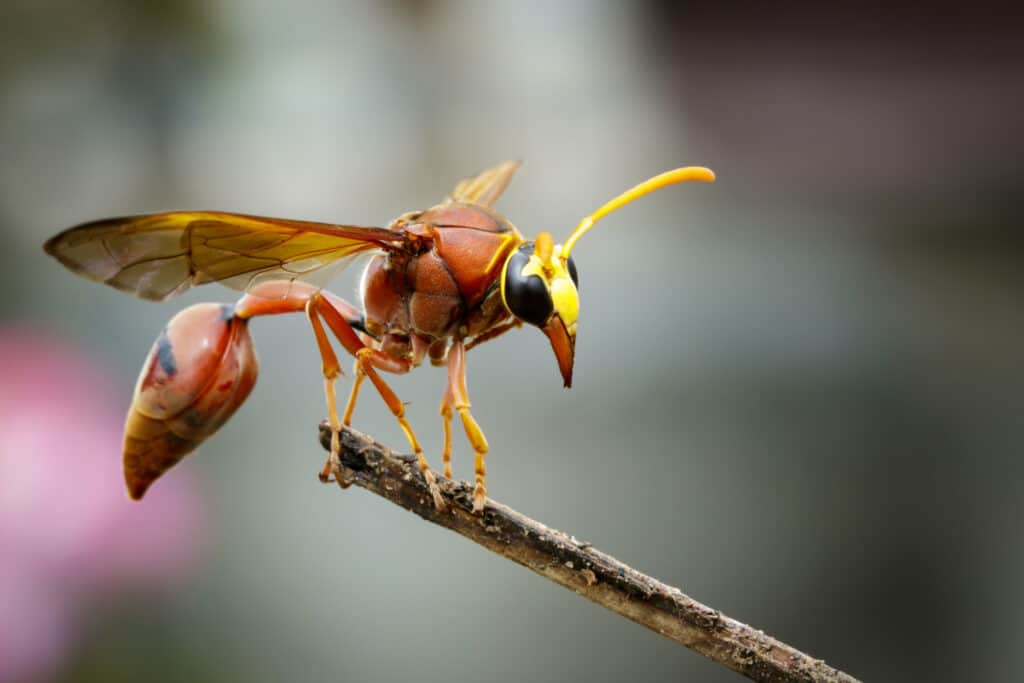
Some wasps will nest around homes to survive the winter season.
©iStock.com/yod67
When temperatures fall below 70 0F, wasps become inactive. During this period, wasps can’t fly but remain active within their nests.
Most social wasps die in frigid temperatures, but fertile females (queens) survive and look for places to hibernate. Wasp queens hibernate by tucking their antennae and wings into a sheltered spot. To protect themselves from falling ice, these queens produce glycerol which acts like antifreeze in their bloodstream.
Some wasps will nest around your home to survive the winter season. The colony will get food and water to keep the queen alive. In winter, most wasps can’t survive without food. Wasps will most definitely find their way into the nooks and crannies of your home, garage, or shed.
The following are some common places where wasps will hibernate in your home:
- Sheds
- Window and door frames
- Vehicles
- Wall cavities
- Garages and sheds
- Wardrobes
- Loft spaces
Types of Wasps That You May Find in Your Home
It’s common to find wasps in most yards and homes. They are beneficial because they help pollinate plants and control other insects. But they can be a nuisance when they build nests around your home or yard.
There are many types of wasps, but only a few will build nests inside or around your home. These include:
Social Wasps

Yellow jackets are examples of social wasps.
©Jim Lambert/Shutterstock.com
Social wasps are the most common type. They live in colonies with a single queen and hundreds to thousands of workers.
The queen wasp lays eggs for the colony and is the only female able to reproduce. The rest of the colony consists of sterile female workers that feed and care for the queen and the young.
There are several different species of social wasps, which differ in appearance and behavior. While some species have only one nest, others can have many nests scattered throughout their territory.
Here are some common social wasp species you might see near your home:
Yellow Jacket Wasps
Yellow jackets are the most common and familiar of the wasps. They build their nests underground, but you can also find them in attics or inside walls. These insects are aggressive, so it is best to avoid them. If you are in a situation where you must deal with a yellow jacket nest, ensure you wear long sleeves, long pants, and gloves when taking care of it.
Bald-faced Hornets
A bald-faced hornet is much larger than the yellow jacket and has black markings on its head, thorax, and abdomen. It builds its ground-level nest, usually under a shady tree branch or bush. Bald-faced hornets are known for their aggressiveness and will attack en masse if threatened by humans.
Hornets
Hornets are yellow and black, with long legs and antennae. They are about an inch long, with a wingspan of three inches. Hornets are found in open areas such as meadows or forest edges. They feed on insects such as caterpillars and flies.
Paper Wasps
These wasps are bright yellow or orange, with black stripes on their abdomen (stinger). They also have long legs and antennae. Paper wasps feed on caterpillars, beetles, grasshoppers, spiders, ants, and other insects they capture while flying around looking for food.
Umbrella Wasps
Umbrella wasps are brownish-black with a shiny appearance. They have long legs and antennae-like hornets – but don’t have yellow markings on them as hornets do.
Solitary Wasps
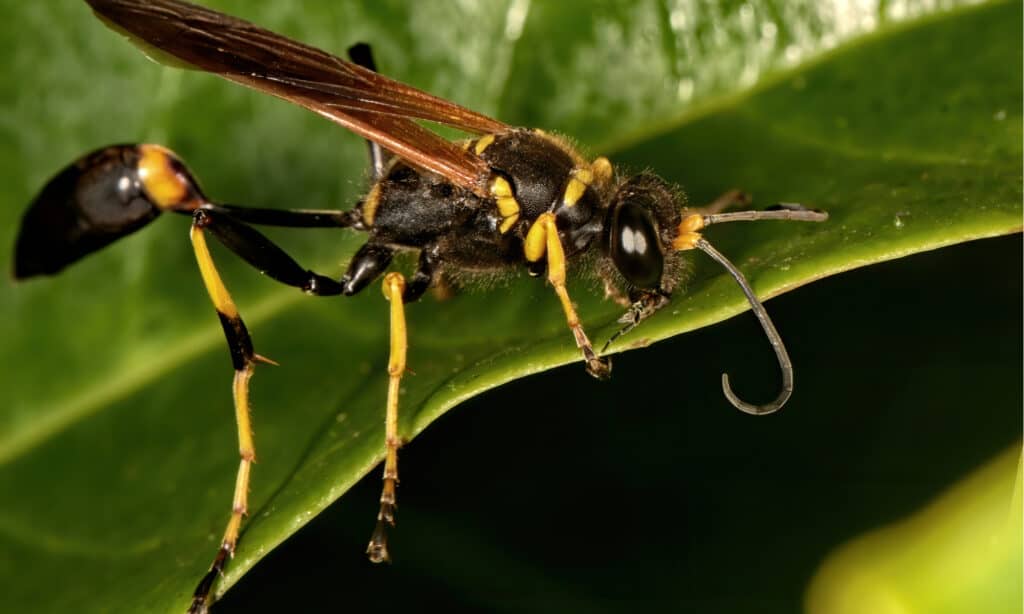
Mud daubers are examples of solitary wasps.
©Russell Marshall/Shutterstock.com
Solitary wasps are the most common type in North America, and there’s a good chance you have some nearby. These are the ones that you see building mud nests on your porch or digging holes in the ground. Solitary wasps are also known as digger wasps or mud daubers because they usually build their nests from mud.
The difference between solitary and social wasps is how they raise their young. Solitary wasps lay their eggs in holes or burrows, then seal them up with mud so that only one larva can survive. As a result, each adult female produces only one offspring per year.
On the other hand, social wasps live in colonies with multiple queens, who all share the responsibility for raising young.
Examples of solitary wasps include:
Mud Daubers
Mud daubers are solitary wasps that build mud nests to protect their larvae during development. When the larvae emerge, they are often covered in mud. These nests can be found hanging on trees or buildings near water sources. They also build their nests in wood. So when you see one in your home, it’s essential to remove it carefully so as not to damage the house.
Sand Wasps
Sand wasps build their nest out of mud and sand. Sand wasp nests can be found hanging from tree branches or buildings near water sources like lakes or streams, where they breed their young.
Digger Wasps
Like other wasp species, digger wasps build their nests out of plant materials such as twigs and leaves instead of mud or sand.
How To Tell What Kind of Wasp Is in Your Yard
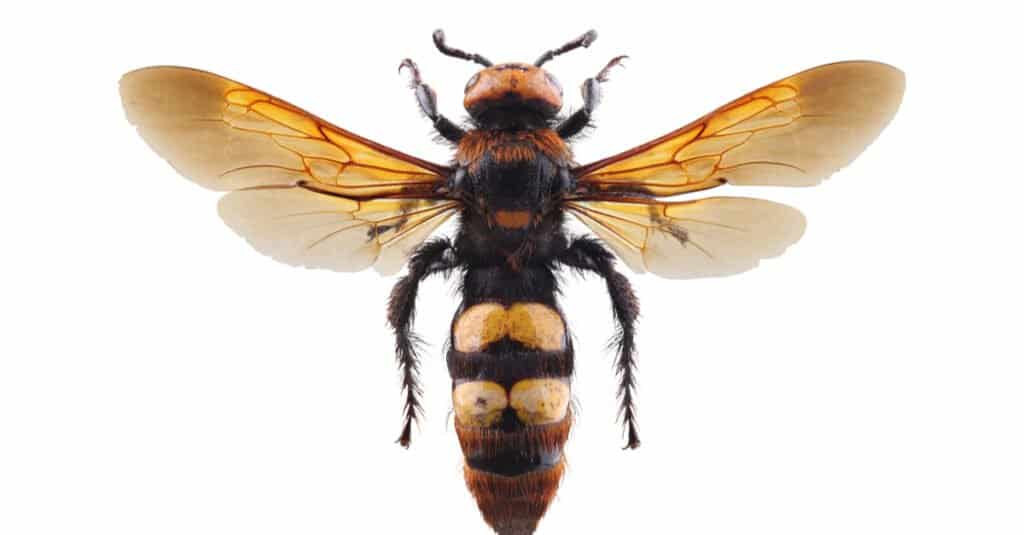
Wasp species can vary widely in size, color, and habitat.
©Vitalii Hulai/Shutterstock.com
You’re outside enjoying a sunny day when suddenly you notice a wasp. The insect is flying around and buzzing in your direction, but it doesn’t seem aggressive. Should you be worried?
Wasp species can vary widely in size, color, and habitat. But some ways to identify them at home are by looking at their physical features and behavior.
Here are some tips on what to look for:
Body Shape
Wasp bodies come in many shapes and sizes, but some common characteristics will help you identify them. The most common shape is long and slender, with minimal variation from head to tail.
Wings
If you see two pairs of wings almost equal in size and shape, the insect is probably a social wasp (yellow jacket or paper wasp). These neither eat wood nor live in colonies as other social wasps do. They only live in large groups because they need a lot of food for their young (larvae). Social wasps build nests out of paper or clay, which they use as nurseries for larvae.
Bees and wasps differ in many ways. For example, wasps generally have a long, narrow waist with straight antennae. On the other hand, bees usually have a broader waist with a rounder head, and their antennae are curved.
How To Deal With Wasps in Your Home or Property
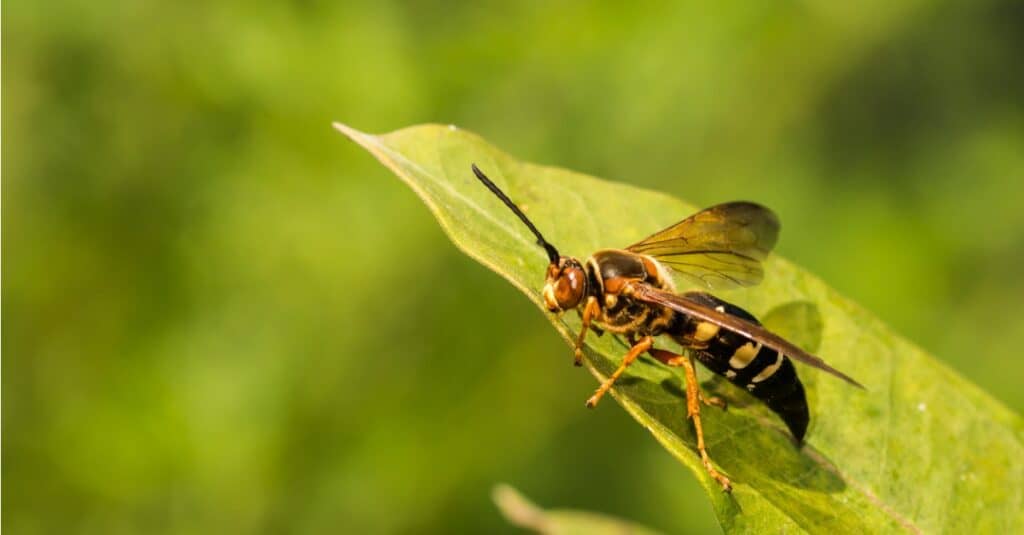
Avoiding leaving water bowls or pet food outside overnight can help prevent wasp infestations.
©iStock.com/JasonOndreicka
If you’ve got a wasp infestation, your first instinct may be to go out and buy bug spray and start spraying. But this isn’t necessarily the best way to deal with them. Wasps only sting in self-defense, so you can avoid being stung by simply avoiding them.
Here are some tips on dealing with wasps in your home or on your property:
Remove All Food Sources From Your Backyard
Avoid leaving water bowls or pet food outside overnight, as this will attract bees and wasps. If you have fruit trees or berries growing in your yard, pick their fruits before they ripen and drop on the ground.
Seal up All Entrances to Your Home
Check for holes in windows and doors, especially around pipes that run through walls into attics or basements. Cover these holes with steel wool or caulk them shut with a silicone sealant. Wasp nests can be found in any dark, hidden place—under eaves, behind shutters, and inside walls. Check all areas that could provide insect shelter and seal them off entirely with steel wool or caulk if necessary.
Build a Trap
You can create an inexpensive wasp trap that will lure the insects and kill them. Cut a soda bottle lengthwise and put a spoonful of honey inside the bottom half. Suspend the top half over the food source so it falls onto it when the wasp enters through the opening at the top. Remove both halves from your yard or deck as soon as they’re trapped, and discard them far away from your home.
Ventilate your house
Wasp nests are in warm, dark places, so keep your windows open during the day and close them at night. This will help prevent wasps from flying into your home and building nests.
Destroy Their Nests
If there is a wasp nest on or near your property, destroy it as soon as possible. You can take care of this yourself by putting on protective gear and spraying the nest with an insecticide formulated for wasps and hornets. You can also hire a professional exterminator to handle the job for you.
Bottom Line
Overall, the wasp population is more active during the summer months. But wasps prepare for winter survival in the fall, and they even spend time in the winter seeking shelter and a place to spend their off-season.
Like most insects, wasps are incredibly resilient as long as they are well-adapted to their environment. So while we may not see them during winter, rest assured that wasp populations are not extinguished but rather conserving their energies until spring, when they will once again become our pests or beneficial insect species.
The photo featured at the top of this post is © Rytis Bernotas/Shutterstock.com
Sources
- Britannica, Available here: https://www.britannica.com/animal/wasp
- Wikipedia, Available here: https://en.wikipedia.org/wiki/Wasp
- Best bee Brothers, Available here: https://bestbeebrothers.com/blogs/blog/where-are-wasps-in-winter
- Fantastic Pests Control, Available here: https://fantasticpestscontrol.com.au/wasps/wasp-lifespan-do-wasps-hibernate/
Thank you for reading! Have some feedback for us? Contact the AZ Animals editorial team.





